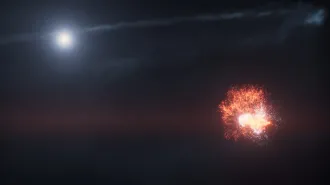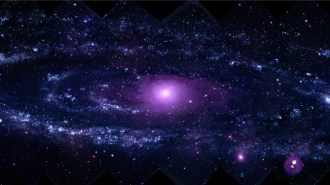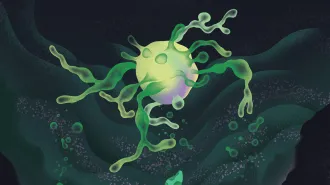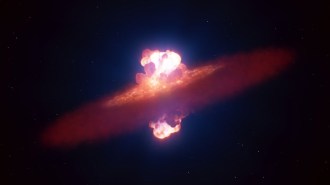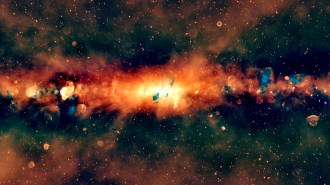A newborn planet munches on gas and dust surrounding its host star
It’s the first time a young planet has been seen shaping rings of gas and dust

Astronomers spotted a growing newborn planet (reddish dot) chowing down on the gas and dust (white) surrounding a young star (center, not shown), as seen in this composite photo made from polarized light and infrared light images.
ESO, R.F. van Capelleveen et al/Astrophysical Journal Letters 2025
